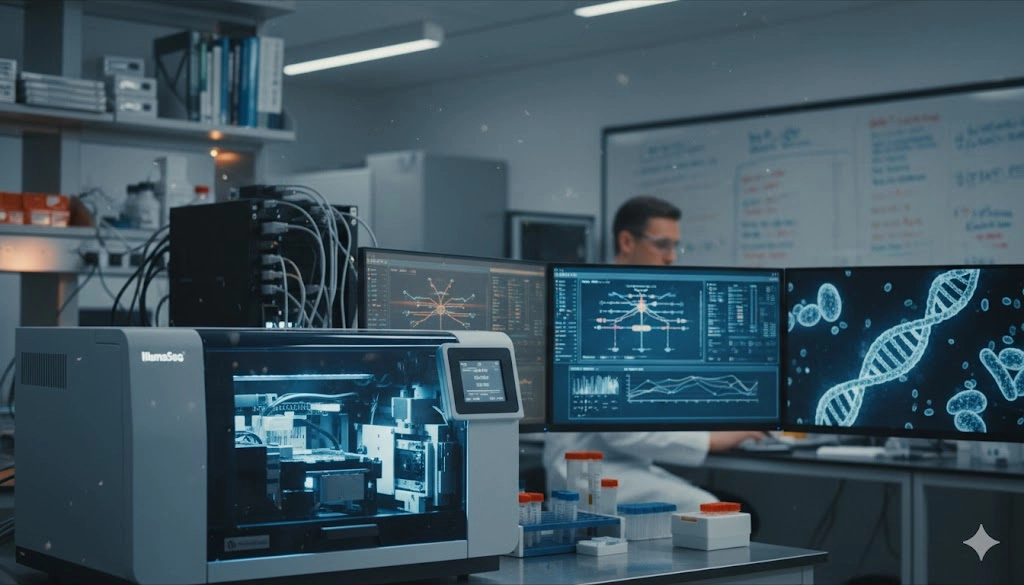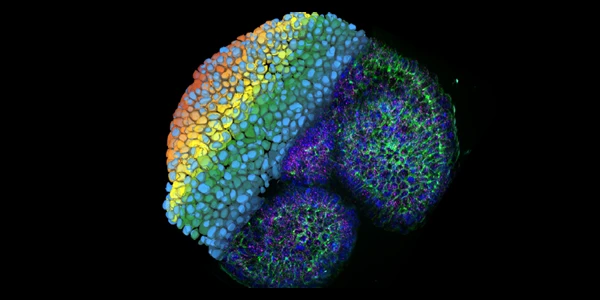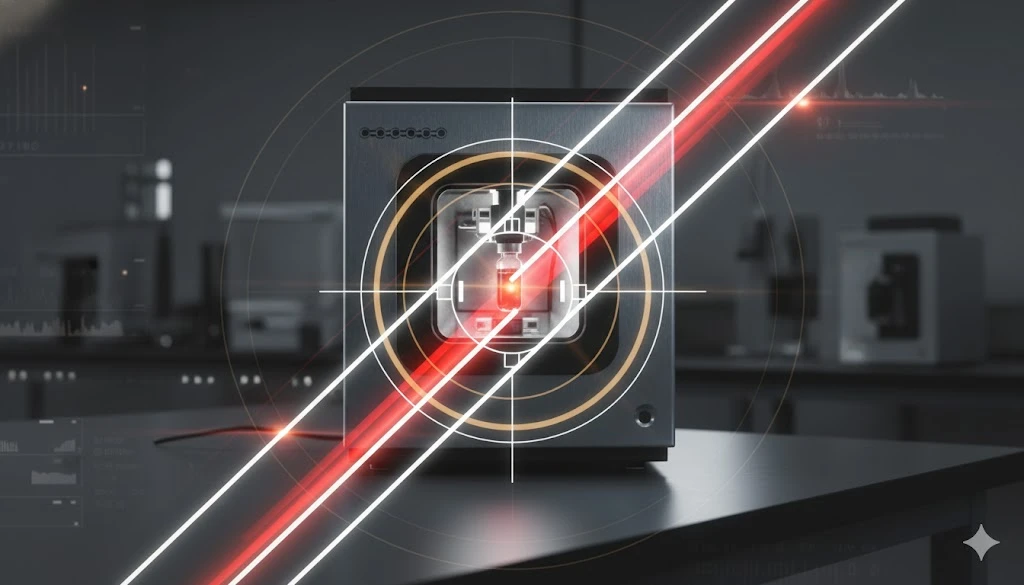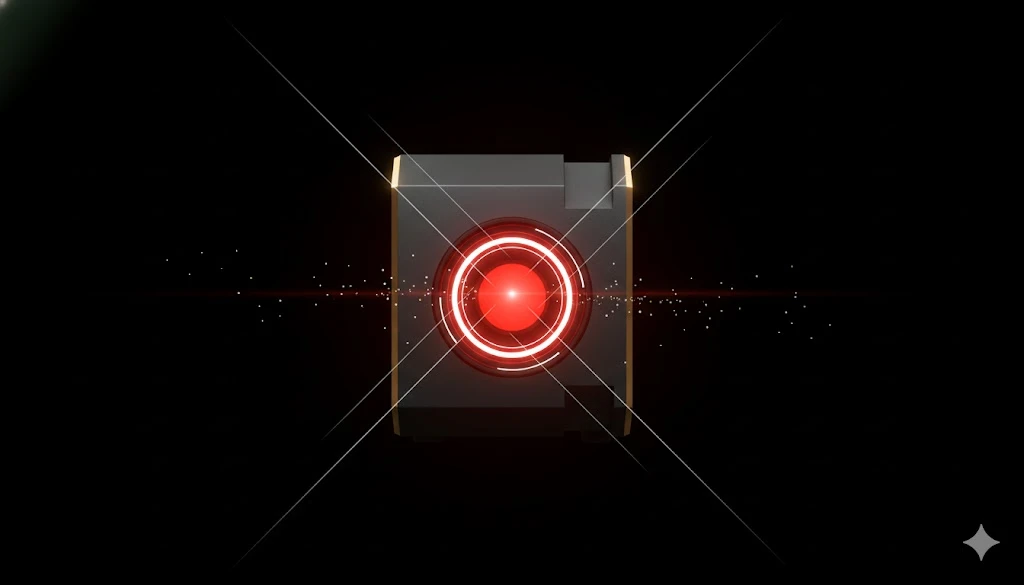DNA Sequencing Technologies: A Comprehensive Overview of Platforms, Applications, and Future Trends

GEMINI (2025)
The ability to accurately determine the nucleotide sequence of DNA stands as a foundational achievement in modern biology and medicine. This technology, fundamentally known as DNA sequencing, has catalyzed transformations across research, diagnostics, and public health, moving genomic analysis from a specialized academic endeavor to an integral component of laboratory workflows worldwide. For laboratory professionals, understanding the underlying mechanics, throughput capacity, and application spectrum of current DNA sequencing platforms is essential for maintaining operational efficiency and ensuring high-quality scientific outcomes that adhere to industry standards.
The initial sequencing methods were laborious and low-throughput. The seminal work of Frederick Sanger in the 1970s established the chain-termination method, a first-generation approach that laid the groundwork for all subsequent advances. However, the completion of the Human Genome Project in the early 2000s, utilizing this first-generation technology, underscored the need for massively parallel and cost-effective methods. This requirement spurred the development of Next-Generation Sequencing (NGS), or second-generation platforms, which dramatically reduced the cost and time required for genomic analysis, leading to exponential growth in data generation. Now, third-generation technologies—characterized by single-molecule analysis and ultra-long reads—are further refining capabilities, enabling laboratories to resolve increasingly complex genomic structures.
The subsequent sections delineate the mechanical principles driving these generations of DNA sequencing technologies, compare the leading commercial platforms, explore their diverse applications in clinical and research settings, and examine the infrastructural challenges presented by high-throughput genomic data.
Core Principles of Second-Generation DNA Sequencing: Chemistry and Detection
Next-Generation Sequencing (NGS) platforms operate on the principle of massive parallelization, fundamentally differing from the sequential capillary electrophoresis employed by Sanger sequencing. While specific chemistries vary across manufacturers, the majority of NGS methods rely on sequencing-by-synthesis (SBS). Understanding the core principles of SBS is key for laboratory professionals responsible for troubleshooting and validating sequencing runs.
The general workflow for second-generation sequencing platforms involves four primary phases: library preparation, clonal amplification, sequencing, and data analysis. The amplification phase is critical as it generates sufficient signal strength for detection. Two common amplification techniques used by commercial platforms are bridge amplification and emulsion PCR.
Sequencing-by-Synthesis (SBS) via Reversible Terminators (Illumina)
The Illumina SBS method, the most widely adopted platform globally, utilizes reversible termination chemistry. This process is initiated after bridge amplification creates millions of clonal clusters of DNA fragments (polonies) anchored on a solid-surface flow cell.
Nucleotide Incorporation: All four reversible terminator nucleotides (dNTPs) are introduced simultaneously. Each dNTP is chemically modified with a fluorescent tag and a reversible 3′-blocking group.
Termination and Imaging: Only a single, labeled nucleotide is incorporated onto the growing chain due to the 3′-blocking group, terminating the reaction. The flow cell is then imaged by a high-resolution camera, recording the color signal emitted by the fluorescent tag, which identifies the base at each cluster position.
Cleavage and De-blocking: A cleavage step removes the fluorescent tag and the 3′-blocking group, regenerating a free hydroxyl group for the next cycle.
Cycle Repetition: The process is repeated for hundreds of cycles, sequentially building the complete sequence for millions of clusters simultaneously.
The high accuracy of the Illumina platform (typically resulting in Q scores around Q30 or 99.9% base call accuracy) is largely attributed to the robust, reversible termination chemistry and the highly parallel nature of the process. This approach minimizes the risk of read slippage and maintains synchronous chain extension across the vast array of DNA clusters.
Sequencing-by-Synthesis via Ion Detection (Ion Torrent)
The Ion Torrent sequencing method employs a distinct approach known as ion semiconductor sequencing. This platform foregoes optical detection entirely, relying instead on the detection of hydrogen ions (
Nucleotide Flow: Templates are loaded onto micro-wells containing a layer of ion-sensitive field-effect transistor (ISFET) sensors. Only one type of dNTP is introduced at a time.
Ion Release: If the dNTP is complementary to the next base in the template strand, the DNA polymerase incorporates it, releasing a hydrogen ion as a natural by-product of polymerization.
Signal Detection: The release of the
H+ ion causes a measurable change in thepH within the micro-well, which is detected as a voltage change by the underlying ISFET sensor.Homopolymer Challenge: When a homopolymer region (a stretch of identical bases, e.g., AAAAA) is encountered, multiple identical nucleotides are incorporated in a single cycle, resulting in a proportionally larger voltage spike. Accurate base calling for long homopolymers can be challenging due to signal saturation and noise.
The electronic detection mechanism provides advantages in speed and equipment cost by eliminating the need for expensive optics, though it presents unique informatics challenges related to homopolymer resolution.
Platform Comparison: Short-Read NGS vs. Long-Read Single-Molecule DNA Sequencing
The rapid commercialization of sequencing technologies has resulted in a diverse marketplace, requiring laboratory professionals to carefully evaluate platforms based on project goals, required throughput, and desired read length. The landscape is primarily divided between short-read (second-generation) and long-read (third-generation) technologies.
Second-Generation: High-Throughput and Accuracy
Platform | Core Chemistry Principle | Read Length | Accuracy | Key Strengths in Lab Settings |
|---|---|---|---|---|
Illumina | Sequencing-by-Synthesis (Reversible Terminators) | Short (75–300 bp paired-end) | Very High ( | Lowest cost per gigabase ( |
Ion Torrent | Sequencing-by-Synthesis (Ion Detection) | Short (200–400 bp) | High ( | Rapid run times (often |
Third-Generation: Long Reads and Single-Molecule Analysis
Third-generation sequencing technologies, led by Pacific Biosciences (PacBio) and Oxford Nanopore Technologies (ONT), revolutionized the field by enabling the sequencing of single DNA molecules without prior Polymerase Chain Reaction (
Pacific Biosciences (PacBio) Single-Molecule Real-Time (SMRT) Sequencing
PacBio utilizes SMRT Cells, which contain millions of zero-mode waveguides (
Real-Time Detection: Fluorescently labeled nucleotides flow into the
ZMW . As the polymerase incorporates a complementary nucleotide, the fluorophore is temporarily held near the bottom of the well, emitting a light pulse that is captured before the label is cleaved off, enabling immediate base calling.Circular Consensus Sequencing (
CCS ): To overcome the relatively higher raw error rate associated with single-molecule reads, PacBio developed theCCS protocol. This involves creating a circular template (SMRTbell) and having the polymerase sequence the template multiple times. The resulting multiple reads of the same molecule are used to generate a highly accurate consensus sequence, termed "HiFi reads," which achieves accuracy comparable to or exceeding Illumina while maintaining long read lengths (typically10–25 kb ).
Oxford Nanopore Technologies (ONT) Nanopore Sequencing
The ONT platform is distinct in its use of biological nanopores integrated into an electrically resistant membrane.
Molecule Translocation: A helicase enzyme unwinds the double-stranded DNA and guides a single strand through the nanopore.
Current Perturbation: As the DNA strand passes through the pore, different combinations of nucleotides temporarily block the ion current flowing through the pore. Each unique blockade pattern—caused by the
k-mer (a short sequence of bases) occupying the pore—is measured and translated into a base call using deep learning algorithms.Key Advantages: ONT offers ultra-long reads (up to
Mb scale), real-time data streaming (allowing analysis during the run), and high portability (e.g., MinION and Flongle devices). The absence ofPCR amplification also allows for direct detection of base modifications, such as DNA methylation.
Long-read platforms are indispensable for resolving complex genomic features that are intractable with short reads, including structural variants (
Key DNA Sequencing Applications in Clinical Diagnostics and Public Health
The adoption of DNA sequencing has moved beyond basic research, becoming a standard component of clinical and public health laboratory operations. The choice of sequencing technology is dictated by the specific application's requirements for read length, throughput, and turnaround time.
Clinical Diagnostics and Personalized Medicine
In the clinical laboratory, DNA sequencing supports the diagnosis, prognosis, and therapeutic guidance for various conditions.
Oncology: Targeted Next-Generation Sequencing (
tNGS ) panels are routinely used to identify actionable somatic mutations in tumor samples (e.g.,EGFR ,KRAS ,BRAF ), guiding the selection of targeted therapies and monitoring treatment efficacy. The high throughput of Illumina systems is well-suited for these short-read applications, offering deep coverage necessary for detecting low-frequency tumor sub-clones.Inherited Disease: Whole-Exome Sequencing (
WES ) and, increasingly, Whole-Genome Sequencing (WGS ) are utilized to diagnose rare and undiagnosed genetic disorders. WGS provides the most comprehensive view, detecting single nucleotide polymorphisms (SNPs ), small insertions/deletions (Indels ), and, with long-read technologies, complexSVs often missed byWES .Non-Invasive Prenatal Testing (
NIPT ): NIPT involves sequencing cell-free fetal DNA (cffDNA ) circulating in maternal blood to screen for common fetal aneuploidies (e.g., Trisomies 13, 18, and 21). This application requires highly accurate, short-read sequencing due to the low concentration and fragmented nature of the analyte.
Infectious Disease and Public Health Surveillance
DNA sequencing platforms are foundational tools in microbiology and epidemiology, enabling rapid identification and tracking of pathogens.
Pathogen Identification: Metagenomic sequencing (
mNGS ) involves sequencing all nucleic acids present in a clinical sample (including host and microbial) to provide an unbiased identification of causative agents, particularly in cases of suspected polymicrobial infection or when traditional culture methods fail.Antimicrobial Resistance (
AMR ): Sequencing allows for the identification of known and novel genes conferring antibiotic resistance in bacterial isolates, facilitating outbreak investigations and informing appropriate antimicrobial stewardship.Real-Time Outbreak Surveillance: Portable nanopore DNA sequencing devices enable rapid, decentralized sequencing of viral and bacterial genomes directly at the point of need (e.g., in remote clinics or during fieldwork). This speed is crucial for molecular epidemiology, providing real-time phylogenomic data to trace transmission chains and monitor pathogen evolution (e.g., SARS-CoV-2 variant tracking).
Managing Genomic Data: Informatics Challenges and Quality Control in DNA Sequencing
The output of modern DNA sequencing platforms is not a simple linear sequence but massive files of raw data (reads) that require sophisticated computational resources and specialized expertise for interpretation. The field of bioinformatics is indispensable for converting gigabytes of raw instrument output into meaningful biological and clinical insights.
Core Bioinformatics Pipeline Components
For a standard NGS experiment, the following steps are universally required, regardless of the sequencing platform used:
Primary Analysis (Base Calling): The raw signal (fluorescence,
pH change, or current perturbation) generated by the instrument is converted into base calls (A, C, G, T) and associated quality scores (Q-scores ).Q-scores are probabilistic measures of the accuracy of the base call, often expressed as aPhred scale, whereQ30 indicates a 1 in 1000 chance of error.Secondary Analysis (Alignment and Variant Calling):
Read Alignment: Short or long reads are mapped to a reference genome (or assembled de novo if no reference is available) using algorithms like
BWA (for short reads) orMinimap2 (for long reads).Variant Calling: Specialized tools (e.g.,
GATK ,DeepVariant ) analyze aligned reads to identify differences from the reference, includingSNPs ,Indels , andSVs .
Tertiary Analysis (Annotation and Interpretation): Identified variants are filtered, annotated with known biological effect (e.g., benign, pathogenic, or variant of unknown significance (
VUS )), and linked to clinical phenotypes and literature databases. This step is where clinical relevance is established, often requiring manual review by certified laboratory directors or genetic counselors.
Data Management and Laboratory Infrastructure
The sheer volume of data produced by modern platforms (a single
Storage: Secure, compliant, and scalable storage solutions are required, often leveraging cloud computing environments to handle data archiving and retrieval. Cloud storage also facilitates collaborative research and ensures regulatory compliance (e.g.,
HIPAA ).Computational Resources: High-performance computing clusters are necessary to run computationally intensive alignment and variant calling algorithms in a timely manner, particularly for clinical samples requiring rapid turnaround.
Quality Control Metrics: Laboratory protocols must incorporate stringent
QC measures applied at every step, including:Library Quality: Assessment of DNA fragmentation size and concentration.
Sequencing Quality: Monitoring cluster density,
Q-scores , and read length distribution.Coverage Uniformity: Ensuring the target region or genome is adequately covered with sufficient depth to confidently call variants.
Future Trends in DNA Sequencing: Q40 Accuracy, Multi-Omics, and Automation
The future of DNA sequencing is characterized by continued reduction in cost, increases in accuracy (moving toward the
Ultra-High Accuracy and Single-Cell Resolution
Q40 Chemistry: New chemistries and computational methods, including deep learning-based base calling (such as those used by Google'sDeepVariant ), are pushing short-read andHiFi long-read accuracy toward theQ40 level. This ultra-high accuracy is critical for detecting rare variants, such as those associated with early-stage cancer or mosaicism.Single-Cell Sequencing: The ability to perform DNA sequencing at the resolution of a single cell provides unprecedented insight into cellular heterogeneity in complex tissues like tumors or developing embryos. Automated microfluidic solutions are streamlining the single-cell library preparation workflow, moving this powerful research tool closer to clinical applications.
Integration of Multi-Omics
The most significant trend involves integrating genomic data with other 'omics' layers to create a holistic biological profile.
Transcriptomics and Epigenomics: Long-read platforms are increasingly capable of sequencing
RNA (transcriptomics) directly, enabling the identification of full-length transcript isoforms. Furthermore, both PacBio andONT can directly detect epigenetic modifications (such asDNA methylation) without the need for additional chemical conversions (like bisulfite treatment), streamlining the study of gene regulation.Data Fusion: Multi-omics approaches—combining data from genomics, transcriptomics, proteomics, and metabolomics—require advanced Artificial Intelligence (
AI ) and machine learning models to effectively analyze and integrate disparate data types. These integrative models are expected to generate more robust biomarkers for disease risk prediction and therapeutic response.
Decentralization and Automation
The development of benchtop and highly automated systems (such as those providing specimen-to-report workflows) minimizes hands-on time and reduces the reliance on highly centralized sequencing centers. This decentralization makes advanced DNA sequencing accessible to smaller clinical laboratories and field-based operations, dramatically improving turnaround times for critical diagnostics. This trend is complemented by open-access data repositories and standardized data exchange formats, which support global collaboration and the rapid sharing of genomic information essential for precision medicine.
Strategic Mastery: The Professional Significance of Advanced DNA Sequencing Knowledge
DNA sequencing technologies represent a dynamic and rapidly evolving domain essential to modern scientific and clinical laboratory practice. The distinctions between first, second, and third-generation platforms—specifically the trade-offs between read length, accuracy, throughput, and cost—dictate their suitability for specific applications, ranging from high-volume clinical oncology testing (short-read
Frequently Asked Questions (FAQ)
What defines Next-Generation Sequencing (NGS) and how does it differ from Sanger sequencing?
Next-Generation Sequencing (
What are the main applications where long-read DNA sequencing platforms excel?
Long-read
How are quality metrics used to ensure the reliability of DNA sequencing data in a clinical laboratory?
Reliability in clinical
What is the primary informatics challenge posed by high-throughput DNA sequencing?
The primary informatics challenge associated with high-throughput
This article was created with the assistance of Generative AI and has undergone editorial review before publishing.










